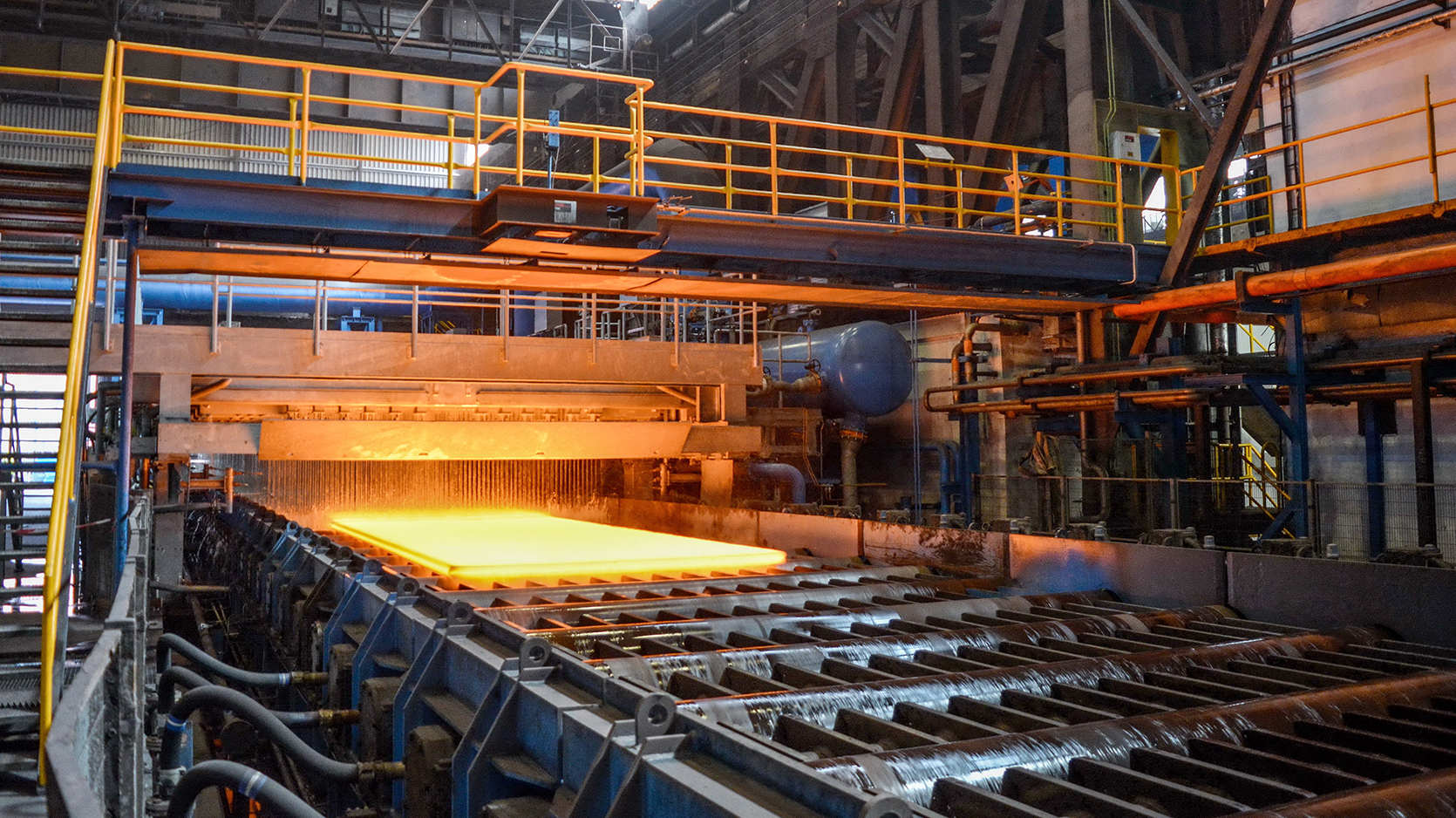Chemical Composition Design
When developing the chemical composition of heavy plates 60–100 mm in thickness with the minimum yield strength of 370–420 MPa (see Table 2), NLMK DanSteel uses low-alloy steels with a given Carbon and Manganese content to obtain the target level of strength. Low Carbon content (not more than 0.07%) as well as the low value of Carbon equivalent CEQ. (not more than 0.35%) are necessary to form the target microstructural condition and ensure a high level of low-temperature impact toughness of the base metal and the heat-affected zone of the welded joint. The Silicon content of steel in the range of 0.15–0.25% raises the possibility of using heavy plates in process chains with subsequent galvanization and decreases the intensity of metal flow (the appearance of dross) during scarfing and cutting. Similarly, the Aluminum content has an optimum range of 0.03-0.04%, above which the risk of formation of aluminate inclusions increases. It is advisable to use steel with reduced content of harmful impurities and gases (S ≤ 0.002%; P ≤ 0.010 %; H ≤ 2 cm3/100 g).
In order to obtain M-grade rolled products (with impact tests down to -20 °C) additional alloying of steel is not strictly necessary, but for an overall increase in ductility and to reduce the temperature of the ductile-to-brittle transition for ML-grade manufacturing (with impact tests down to -50 °C) it is appropriate to add Nickel and, in some cases, Chromium in the maximum total amount of 0.50%. For TMCP traditional micro-addition of niobium up to 0.030% contributes to the efficient refinement of microstructural elements[2].
Manufacturing Process
Continuously cast (CC) slabs with thickness up to 355 mm from vacuum degassed (VD) converter steel produced at Novolipetsk Iron and Steel Works (NLMK) are used for the production of the S420M/ML heavy plates up to 100 mm in thickness at the NLMK DanSteel. In order to improve the macrostructural quality of slabs of each size, the Iron and Steel Works specialists have developed individual modes of dynamic soft reduction[3] which make it possible to increase the level of low-temperature impact energy, including in 1⁄4 and 1⁄2 thickness of rolled products. Controlled slow cooling of slabs is used for more efficient removal of residual atomic hydrogen and partial relaxation of residual internal stress.
CC slabs are rolled at the NLMK DanSteel Mill Quarto 4200. Slabs are heated in a 6-zone continuous slab reheating furnace with walking beams. The heating duration is 5–8 hours depending on slab thickness. The slab setup temperature varies from 1,130 to 1,180 °C making it possible to regulate the degree of solubility of carbonitride forming elements determining the required grain size[4]. The first TMCP stage is performed at temperatures ≥ 980 °C. In order to obtain a given level of yield strength and impact energy at target temperatures in longitudinal and transverse directions and to ensure an increased through thickness uniformity of mechanical properties, the plates, depending on their thickness, are rolled in α- and (α+γ)-regions in intensive two- or three-stage thermomechanical rolling modes with intermediate and final accelerated cooling. In two-stage rolling, the ratio of thickness of semi-finished rolled products to the final thickness of the plate depends on the final thickness of rolled products and is ≈ 1.6–3.0. In three-stage rolling, the ratio of rolled products thickness before the 2nd and the 3rd stage is ≈ 2.5–3.0 and ≈ 1.5–2.0, respectively. The interstage cooling of semi-finished rolled products is performed in still air or by means of interstage accelerated cooling (IC)[5] at a rate of 0.3 to 1.2 °C/s. The final accelerated cooling of rolled products starts from the lower part of the γ-region or from the upper part of the (α+γ)-region and is completed in one or several stages to ensure an optimal balance between the ACC intensity and the flatness of rolled products. As the thicknesses of rolled products is high, the cooling rates are close to maximum of AC possibilities. It is noteworthy that there is a need for significant super-cooling of sub-surface (1/8t) layers of rolled products of up to 150–200 °C. The reduced carbon equivalent reduces the negative impact of this surface super-cooling.







